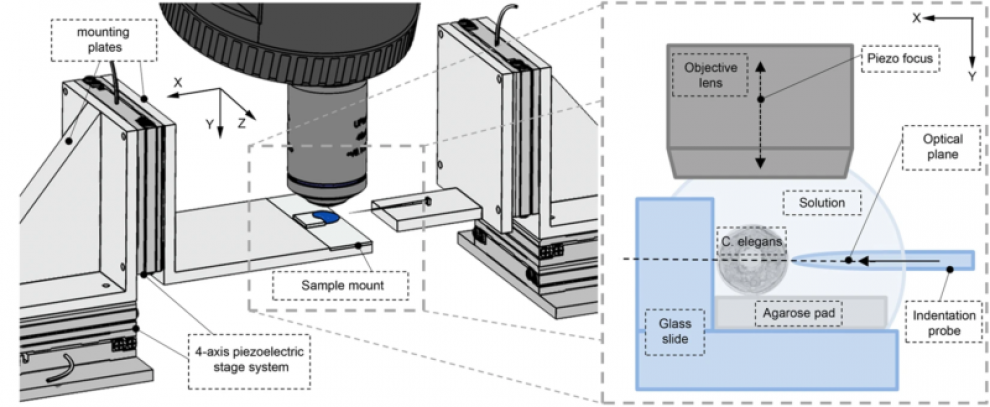The TouchLab has long been involved in the study of the nematode C. elegans as a model organism to understand the interplay between biomechanics and mechanosensation.
We have used atomic force microscopy to characterise the topography of the outer cuticle and explore how genetic mutations give rise to changes in cuticle structure1. To measure key biomechanical characteristics of the organism we built a micro-indentation system, incorporating a microforce sensing probe. This enabled us to measure both the force-displacement response and the deformation of the organism’s cuticle under a defined load. These experimental data formed the basis of a more realistic (finite element) model of the organism with which we were able to estimate activation thresholds for mechanosensory neurons2.

1https://doi.org/10.1016/j.nano.2016.09.006
2https://www.nature.com/articles/s41598-017-12190-0
 Close
Close

